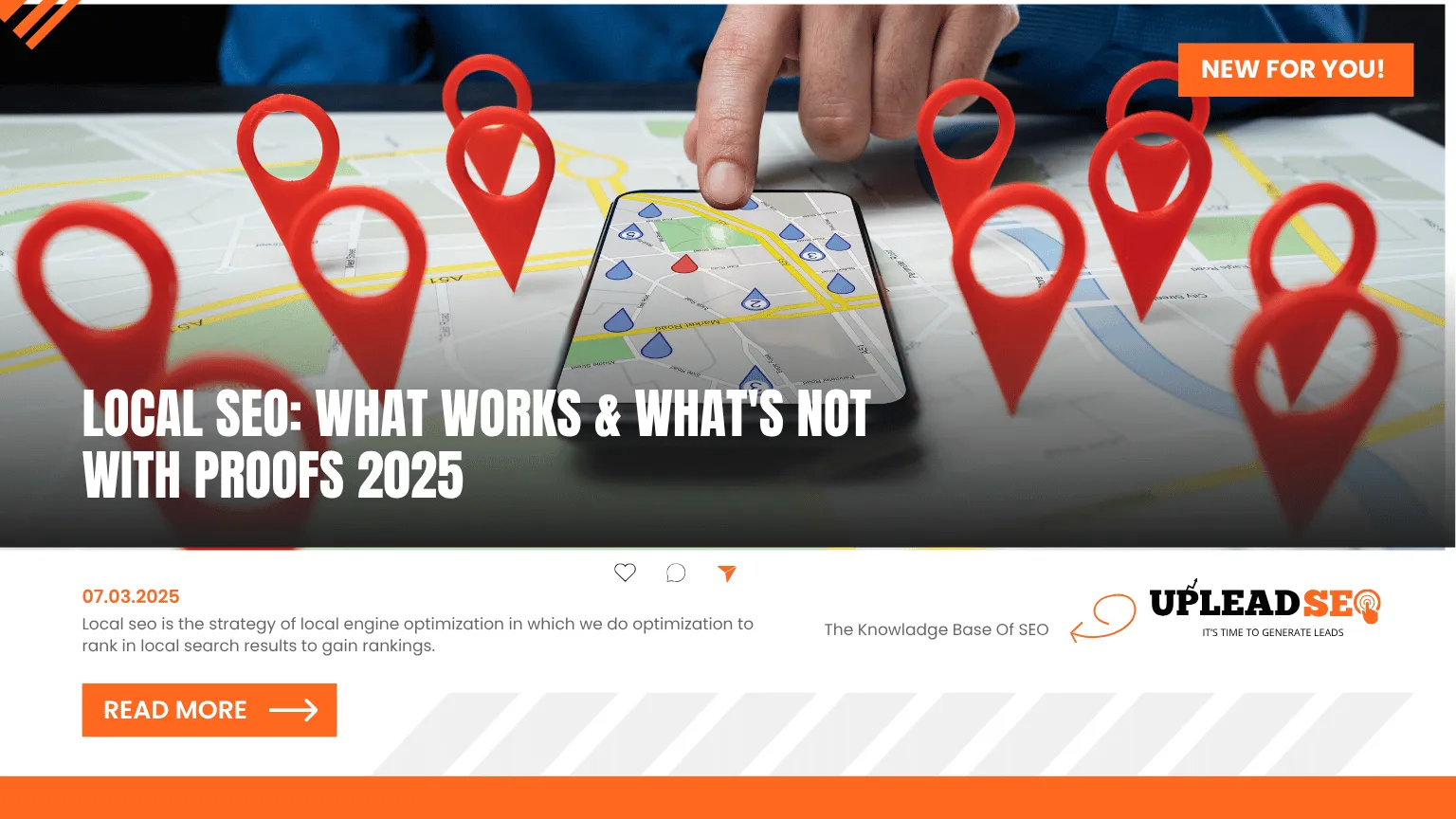Local SEO means local optimization; the word local says its meaning. I explain what is local SEO, its importance, how it works, how to do it, the difference, by industry, career, and consultation. Let’s discuss.
What is Local SEO?
Local seo is the strategy of local engine optimization in which we do optimization to rank in local search results to gain rankings. This is what we also call unpaid, organic, or natural traffic, which leads to more customers. It involves strategies to improve visibility in local search results, particularly on Google Maps and the Google “Map Pack.” According to the study, 93% of the local businesses from search engines attract customers.
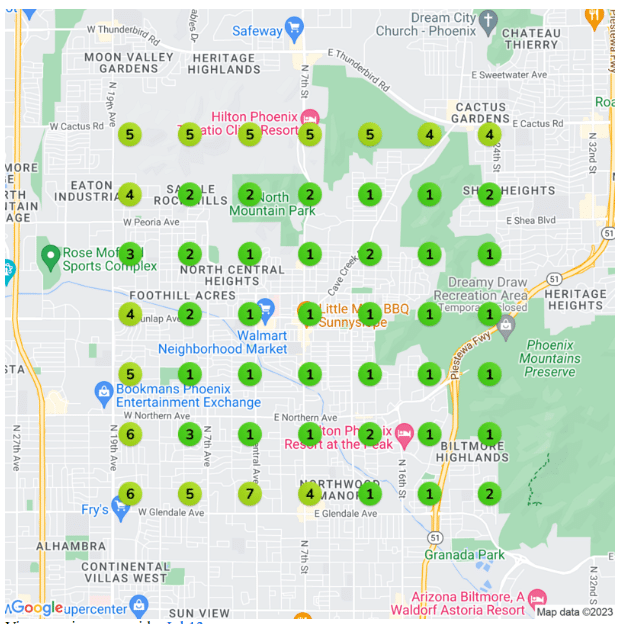
Local engine optimization or national seo is different from the standard seo, like on-page, off-page, or technical seo. Also, the landscape is rapidly transforming with AI integration, as Google AI Overviews now appear in 40.2% of local business searches, fundamentally altering how local visibility is earned and maintained.
Why is Local SEO Important?
Local seo important because in the search engine world, everyone searches for their problem, desire, or fear; in other words, if they buy, gain info, or something else, they search. So if your business is ranked where nearby users are, 95% chance they’ll come to your store and become your customer. Every business has a goal to generate revenue! Yes, local search engine ranking gives you more revenue, so it completes your goal.

local queries like “pizza Manhattan NY” or with “near me” or “best coffee in Turku.”.
How Local SEO Works
Google states that it balances three core signals: Relevance, Distance, and Prominence. The “R-D-P” model. “Local Pack” (also known as the “Map Pack”), which displays a map and a few business listings at the top of the results, and the “Localized Organic” results, which are the more traditional blue links that are influenced by the searcher’s location.
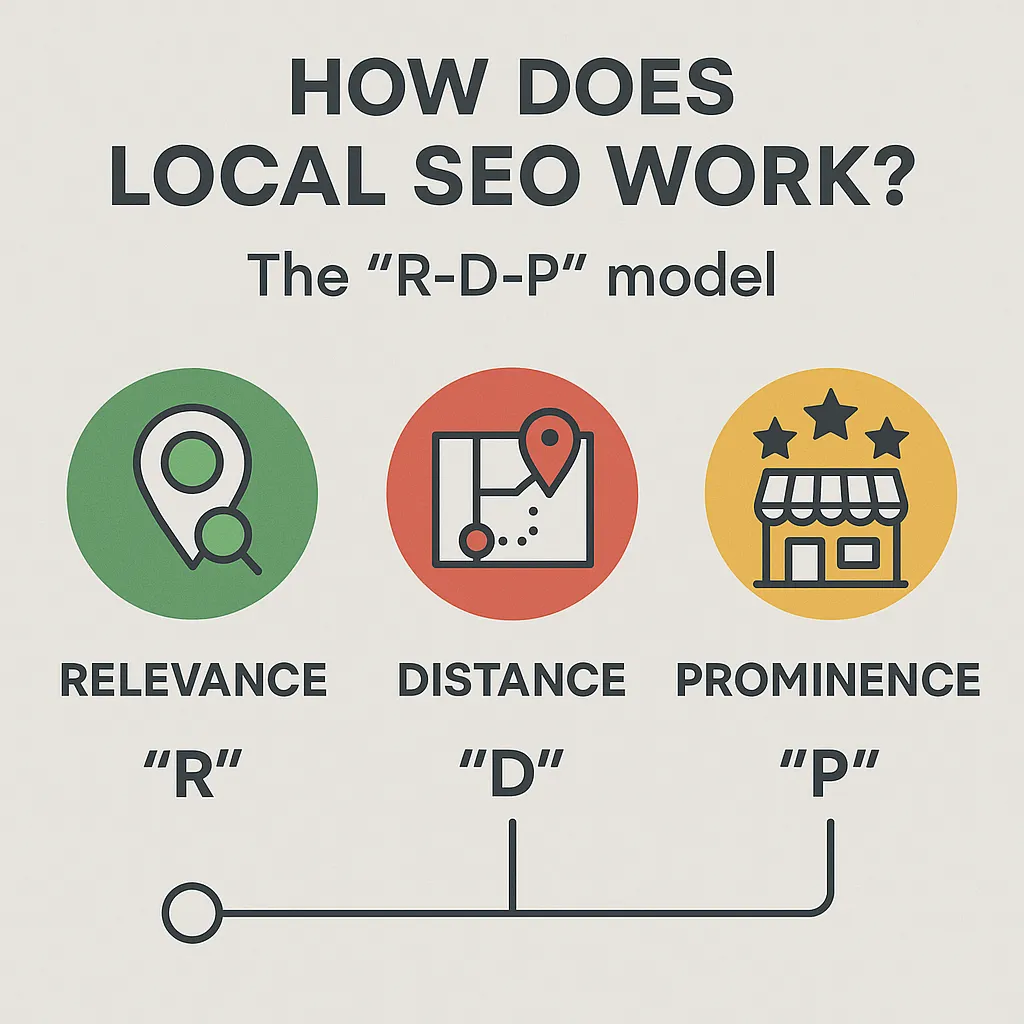
| Pillar | Practical signals Google measures | Things you can influence |
|---|---|---|
| Relevance (Does this business match the query?) | Primary + secondary categories, services, keywords in the Business Profile & on-site content | Accurate categories, complete service list, location-specific landing pages |
| Distance (How close is it to the searcher?) | GPS position, stated service areas, embedded address schema | Correct pin placement, multiple verified locations, service-area settings |
| Prominence (How popular & trusted is it?) | Review count/rating/recency, backlinks, citation consistency, brand mentions, behavioral engagement | Steady review generation, local PR/backlinks, citation cleanup, compelling photos & Posts |
You may also need the optimization of the on-page and off-page seo, because these are the combined optimization that makes a complete package of seo. Also, the digital PR and Local seo work together.
How to Do Local SEO?
To effectively optimize for local search engines, when standard seo and local seo are different, how there optimizations the same??
Google’s AI team introduced “neural ranking GAMs” to make ranking models interpretable. One example they show uses features like distance, price, and device type to rank hotels, visualizing each feature’s contribution. The research paper called “Neural Learning-to-Rank with Interpretability” Google AI Blog.
Google Business Profile Optimization:
Claim and fully populate your Google Business Profile (formerly GMB). Upload good photos, include detailed business info, and use relevant keywords in the description. This strengthens local signals.
The Power of “Near Me”
Proximity is a dominant factor for queries with explicit local intent, such as those containing “near me.” A staggering 76% of people who conduct a “near me” search on their smartphone visit a related business within a day, and 88% of local mobile searches result in a store visit within a week, highlighting the powerful link between proximity and immediate consumer action.
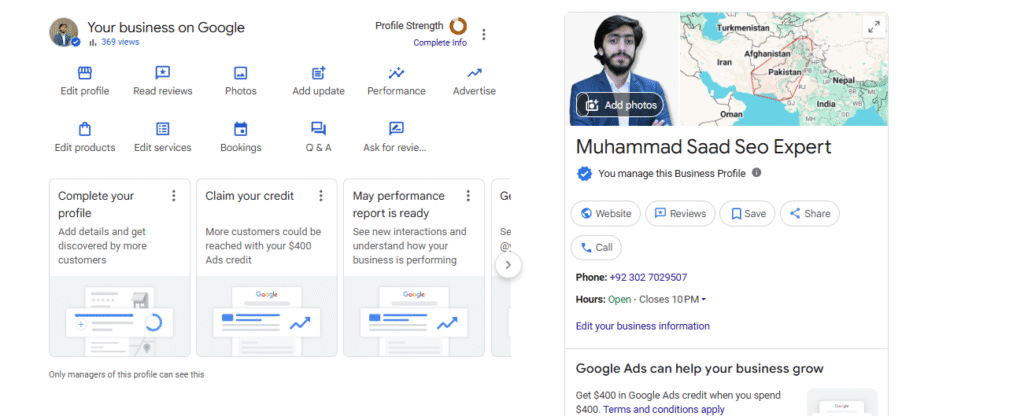
Is local keyword research worth it?
Yes, Local keyword research finds keywords like “near me” or “best coffee in Turku.”. Conduct local keyword research and use location-specific terms (city, neighborhood) in page titles, meta tags, and content. For example, add city/state names in the title/meta to signal geographic relevance.
Google Maps
Google has added a new Q&A feature to Google Maps, allowing users to submit questions to owners and allowing them to respond. This Q&A feature is tied to the associated Google My Business account.
Reviews and reputation management:
Proactively generate and manage customer reviews. The number and quality of reviews are important local ranking factors. Encourage satisfied customers to leave reviews on Google and respond to them.
Local citations and directories:
List the business on trusted local directories (e.g., Yelp, Yellow Pages, local chambers) and niche sites. Build local links by earning mentions or links from city blogs, news, or partners. These citations (even without links) boost local relevance.
Accurate business markup (NAP and schema):
Ensure the business name, address, and phone (NAP) are exactly consistent across the website and all listings. Koray stresses that inconsistent NAP “confuses search engines” and harms rankings. Implement LocalBusiness schema with correct location info (address, geo-coordinates) on your site.
Local Link Building Or Local Link Acquisition:
Earning backlinks from other websites is a powerful vote of confidence that significantly boosts prominence. For local SEO, the relevance of the linking domain is paramount.
A link from a local newspaper’s business section, a blog run by a local influencer, a non-profit community organization’s sponsor page, or even a complementary, non-competing local business is far more valuable than a link from an irrelevant, non-local site. A proactive strategy for local link building is a key differentiator for top-performing businesses.
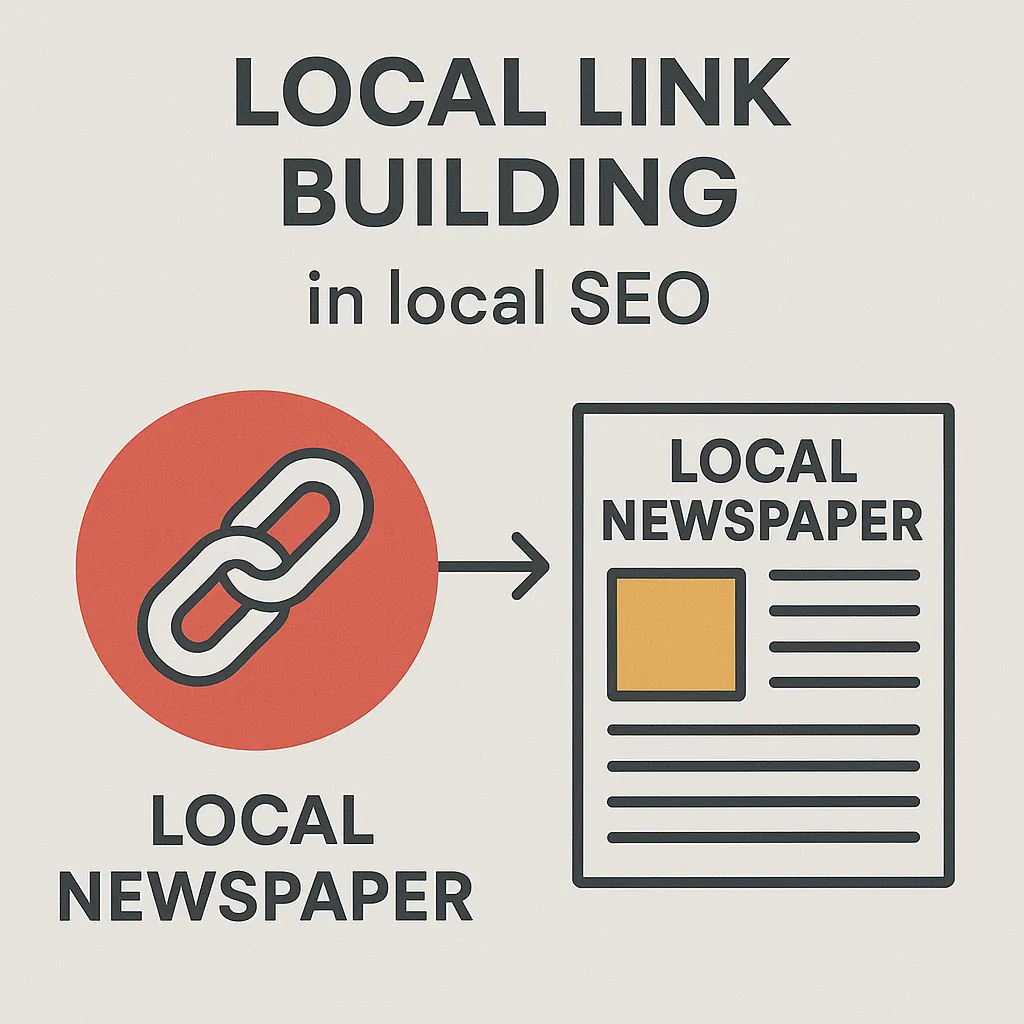
Social Media Marketing:
Location-based social engagement, local event promotion, and community interaction
Content Marketing:
Location-specific blog content, local event coverage, community-focused resources
Digital Public Relations (PR): Engaging in digital PR is an advanced strategy for earning high-authority mentions and links. This can involve sponsoring local events, partnering with local charities, publishing data or studies of local interest, or positioning the business owner as a local expert available for media commentary.
The resulting press coverage from local news sites, TV station websites, and other media outlets can generate some of the most powerful prominence signals available. The case study for Encazip.com, for example, demonstrated how a strategy combining Digital PR and Local SEO led to a 155% increase in organic traffic over six months
Pay-Per-Click Advertising:
Geo-targeted campaigns, location extensions, and local keyword bidding
Competitor Analysis:
Local market research, competitor strategy analysis, and differentiation opportunities
Ranking Signals From Google Patents:
- Business-type search queries frequency
- Direct address queries to the mapping service
- Map marker selections and interactions
- Direction request volumes
- Phone call initiation requests
- Mobile device information transfers
- Storefront image view engagement
- Email address inclusions
- Page view counts for address-containing pages
US8612436B1 “Reverse Engineering Circumvention of Spam Detection” (Grundman, Google LLC). This patent addresses local listing spam. Google assigns a spam score (0–1) to each new business listing to gauge likely fraud. Listings above a threshold are removed or demoted.
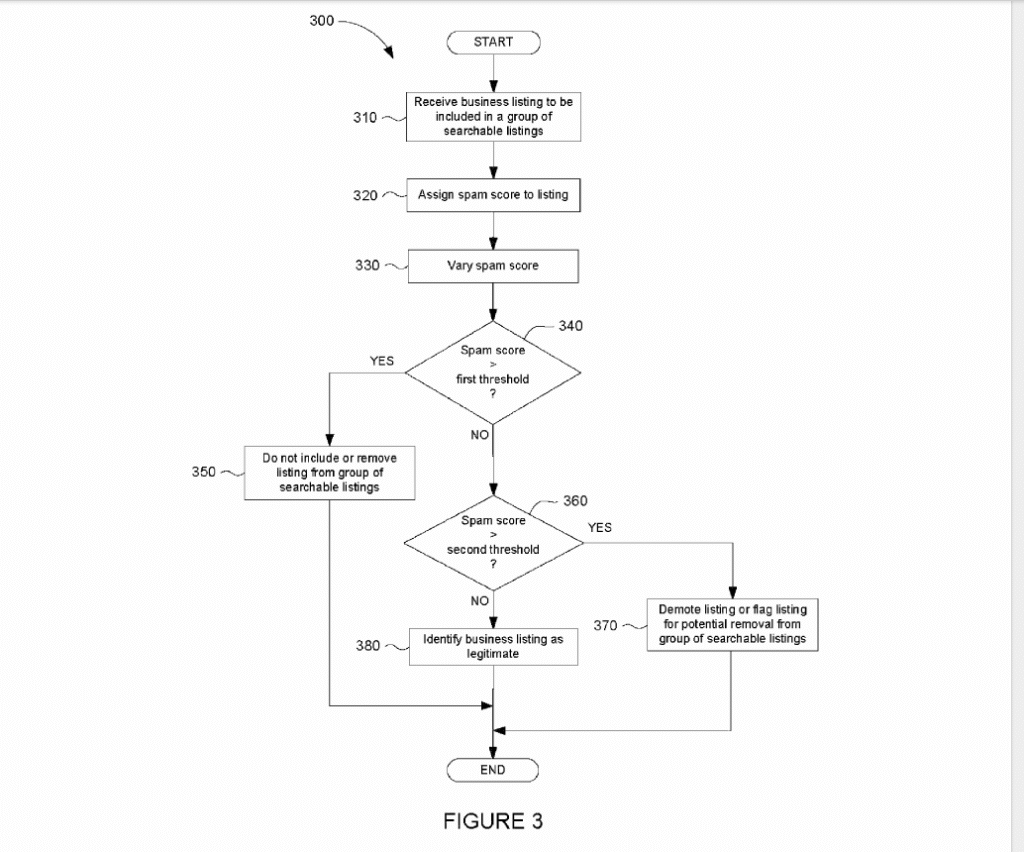
Crucially, the patent adds random “noise” to these spam scores to prevent spammers from reverse-engineering the filters. For example, spammers trying many fake entries cannot easily learn which attributes (e.g., name keywords) trigger high spam scores, because Google randomly perturbs the score slightly. This patent underscores Google’s effort to detect and deter fake or keyword-stuffed local listings.
- Maintain consistent address information across all platforms
- Encourage customer interactions across multiple touchpoints
- Optimize Google Business Profile for maximum engagement
- Track and optimize for direction requests and phone calls
- Main Website PageRank: Authoritative document scoring
- Referral Volume: Total documents mentioning the business
- Referring Site Authority: PageRank of sites linking to the business
- Directory Listing Count: Total directory submissions
- Review Scores: Numeric rating values
- Average Review Score: Aggregate review quality
- Review Source Authority: Type and quality of reviewing platforms
- Review Content Analysis: Descriptive language in reviews
- User Interaction Metrics: Engagement and Behavioral Signals
- Financial Data Visibility: Revenue and business scale indicators
- Business Age: Operational longevity signals
US8538973B1 “Directions-based Ranking of Places” (Gonzalez et al., Google LLC). This patent is about using user navigation data to influence local rankings. It collects historical directions queries (e.g., Google Maps routing requests) to measure a place’s popularity. A local search returns places scored by a combination of distance and popularity.
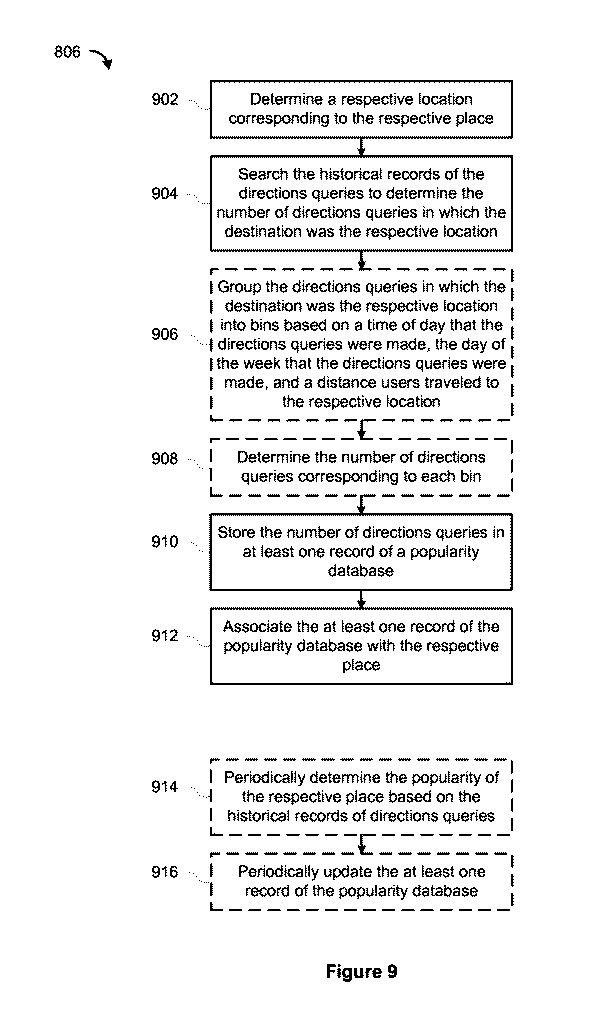
Concretely, the patent’s summary explains: when a user at location X searches, Google finds matching places and notes each one’s distance from the user. It then ranks results based on a score that incorporates both the distance and the place’s popularity (derived from past directions queries and possibly review counts). In practice, this means businesses that attract many routing requests (e.g. tourists frequently go there) may rank higher, balanced against how far they are.
Optimization tips from top Industry experts:
Mobile Optimization Imperatives:
- Responsive design ensuring cross-device compatibility
- Simplified navigation with large, tappable elements
- Flash and unsupported multimedia elimination
- Multi-platform testing across devices and browsers
Schema Markup Integration:
- Local Business schema implementation
- Service area and location specification
- Operating hours and contact information markup
- Review and rating schema integration
Expert surveys, Ranking signals for Local SEO
| Ranking Factor Group | Local Pack Importance (%) | Localized Organic Importance (%) |
| Google Business Profile | 32% | 9% |
| On-Page Signals | 19% | 36% |
| Links | 11% | 26% |
| Reviews | 16% | 6% |
| Behavioral Signals | 8% | 9% |
| Citations | 7% | 7% |
| Personalization | 6% | 7% |
What’s the difference between Local vs on-page?
Local seo is optimizing the business/website for the local search results. page seo is optimizing the on-site elements of a website, like headings, titles, meta descriptions, URL, etc.
| Aspect | Local SEO | On-Page SEO |
|---|---|---|
| Primary goal | Help your business appear in map packs and localized search results ( “coffee shop near me” ). | Help any web page rank higher in organic search results, regardless of geographic intent. |
| Geographical focus | Radius-based (typically ≈ 0–50 km around each location). | None – applies globally unless you target a locale via hreflang or geo-targeting. |
| Key ranking signals (Moz 2024 survey weight*) | • Google Business Profile (GBP) elements ≈ 32 % • NAP/citation consistency ≈ 15 % • Review volume & rating ≈ 17 % | • On-page title optimization • Topical depth & internal links ≈ 23 % • Page experience metrics (Core Web Vitals) ≈ 15 % |
| Most visible SERP real estate | Local 3-Pack, Google Maps, “Places” carousel. | Blue-link results, Featured Snippets, People-Also-Ask, etc. |
| Business data required | • Name, Address, Phone (NAP) exactly identical in 100 % of major directories. • GBP categories (choose up to 10, 1 primary). | None mandatory; metadata lives on the page itself (title ≤ 60 chars, meta description ≤ 155 chars). |
| Structured data | LocalBusiness, Organization, GeoCoordinates; must include latitude/longitude with 6 decimal-place accuracy. | Article, Product, FAQ, HowTo, etc.; follow schema.org type that matches content. |
| Reviews & reputation | Star rating shown when ≥ 5 Google reviews. Volume & recency are direct ranking factors. | Reviews only count indirectly (they may influence CTR but aren’t an on-page signal). |
| Link signals | Local citations from authoritative directories (Yelp, Apple Maps, Bing Places). Quality > quantity; aim for ~30–50 solid citations per location. | Reviews only count indirectly (they may influence CTR, but aren’t an on-page signal). |
| Typical KPIs | Google Business Profile Insights, BrightLocal, and Whitespark. | • Organic sessions • Keyword positions • Click-through rate & conversions |
| Tools | Brick-and-mortar stores, service-area businesses, and multi-location brands. | Google Search Console, Screaming Frog, Surfer SEO, PageSpeed Insights. |
| When to prioritize | Blogs, SaaS sites, national e-commerce, and content marketing hubs. | Traditional backlinks: domain-level authority, anchor text relevance, and internal link flow. |
How complicated is Local SEO?
Local seo is not complicated, it’s easy, it’s the same as regular seo, just some different optimizations.
Is On-page seo important with local seo?
Yes, on-page seo is important with local seo, because I already said it gives the boost when off-page, on-page, and technical and local seo combine.
How to Monitor Your Local SEO Results
Monitor local seo through the tools, a lot of Google official and market tools to monitor the progress of your business. Google automatically sends a performance report monthly.
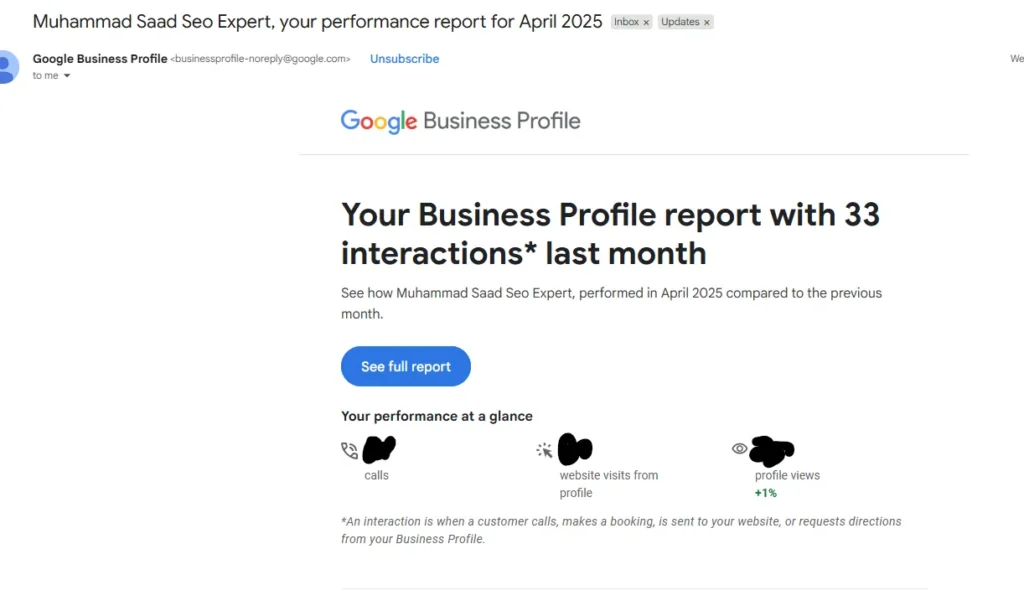
How We Use AI To Do Local Seo?
You use AI to automate your local seo tasks. like create a browser agent that scrapes all the your city local business data, their ranking, traffic, which gives you an idea of how you plan your next moves.
What is the AEO optimization for local seo?
Answer Engine Optimization (AEO) is the practice of shaping your online signals so AI-powered “answer engines” (Google AI Overviews, ChatGPT-Browsing, Perplexity, Bing/Copilot, Siri, Alexa, etc.) choose your business as the source they cite when someone asks a question.
Google, OpenAI, Microsoft, and others all say they weigh the same three buckets you already know from Local SEO (Relevance, Distance, Prominence) plus a new one: Answerability. In practice, that means your local entity data must be machine-readable and your content must already contain the answer in a concise, trustworthy form.
| # | What to do |
|---|---|
| 1. Perfect your structured entity data | Mark up every location page with LocalBusiness, PostalAddress, and FAQPage/HowTo schema. Include latitude, longitude, service area, opening hours, price range, and review markup. This gives LLMs a clean JSON object they can slot straight into answers. |
| 2. Keep your GBP & other listings pristine | Consistent NAP, category, hours, menus, appointment links, and a steady stream of photo uploads feed the models’ freshest local dataset. |
| 3. Publish ×–FAQs that mirror spoken queries | Add a short Q&A block answering things people literally ask: “Do you offer gluten-free pizza in Turku?”, “Is parking free after 6 pm?”. Voice assistants love to quote these verbatim. |
| 4. Lead with the answer, then elaborate | Write a 30–50-word summary at the top of each service/location page; that chunk is what AI snaps for snippets. |
| 5. Build review depth & variety | Encourage detailed, attribute-rich reviews (“family-friendly”, “wheelchair accessible”). Models mine review text to validate expertise and suitability. |
| 6. Widen your citation net beyond Google | Submit to Apple Business Connect, Bing Places, Facebook, niche directories, and relevant local media; non-Google engines draw heavily on these when they distrust Google data. |
| 7. Offer machine-readable menus/products | Restaurants: use the GBP “structured menu” or Menu schema. Service businesses: list service names + prices in the schema. These often appear word-for-word in AI answers. |
| 8. Optimise images for visual answers | Geotag hero photos, add descriptive alt text (“front of Café Aurora, Hämeenkatu 10, Turku”); Gemini and Bing Vision pull these into multimodal answers. |
| 9. Create “cluster” content instead of single-keyword pages | Until analytics catches up, run periodic checks in ChatGPT, Copilot, Perplexity, and Gemini for your top local questions and log when/if you’re cited. Tools like OmniSEO™ can automate this. |
| 10. Track AEO citations | Until analytics catches up, run periodic checks in ChatGPT, Copilot, Perplexity, and Gemini for your top local questions and log when/if you’re cited. Tools like OmniSEO™ can automate this. |
How do we do local seo For specific industries?
1. Food & Drink (restaurants, cafés, bars)
- Structured menus & photos
Google’s May 2025 AI menu-parser means you can scan a PDF or photo and instantly push structured dishes, prices, and dietary tags to your profile—do it once a quarter so models stay current. - Show live specials with “What’s Happening”
A new “This week” strip lets you surface happy-hour deals or live-music nights; you can update manually or sync Instagram/Facebook so the feed stays fresh. - Schema tips:
Restaurant+Menu,ImageObjectwith geo-coordinates; add FAQ-style Qs about parking, allergens, and kitchen close time (a pain-point that’s trending in reviews). - Citations that move the needle: OpenTable, The Fork, TripAdvisor; remember, each pushes its own photos into Google.
2. Healthcare (clinics, dentists, physiotherapy)
- E-E-A-T & YMYL safeguards
Every practitioner bio should carry degrees, board certs, and awards—mark them up withPhysicianschema so Google and LLMs can map expertise. - HIPAA-aware review replies
Never reveal PHI; respond in generic terms (“Thanks for the feedback, please call our office…”) to avoid accidental disclosures. - Appointments & insurance filters
Enable Reserve-with-Google or third-party EHR booking so “Book” buttons appear; add accepted insurers in your GBP “Services” list—these data points are now surfaced in AI Overviews. - Citations: Healthgrades, Zocdoc, Doctolib (EU), Vitals—Google treats them as authority hubs for prominence.
3. Legal Services
- Local Services Ads (LSA) are table-stakes
June 2025 LSA terms expand Google’s licence over intake call data; get Google Screened, but train intake staff to keep first calls general to protect privilege. - GBP categories & attributes
Use the narrowest primary category (“Family Law Attorney”, “Personal Injury Lawyer”) plus “Virtual consultations”. - Compliance content: disclaimers (“Not legal advice”), attorney bios with bar numbers,
LegalServiceschema; avoid “best” or “guarantee” language in titles—state bars are watching. - Citations: Avvo, FindLaw, Justia, local bar association directories.
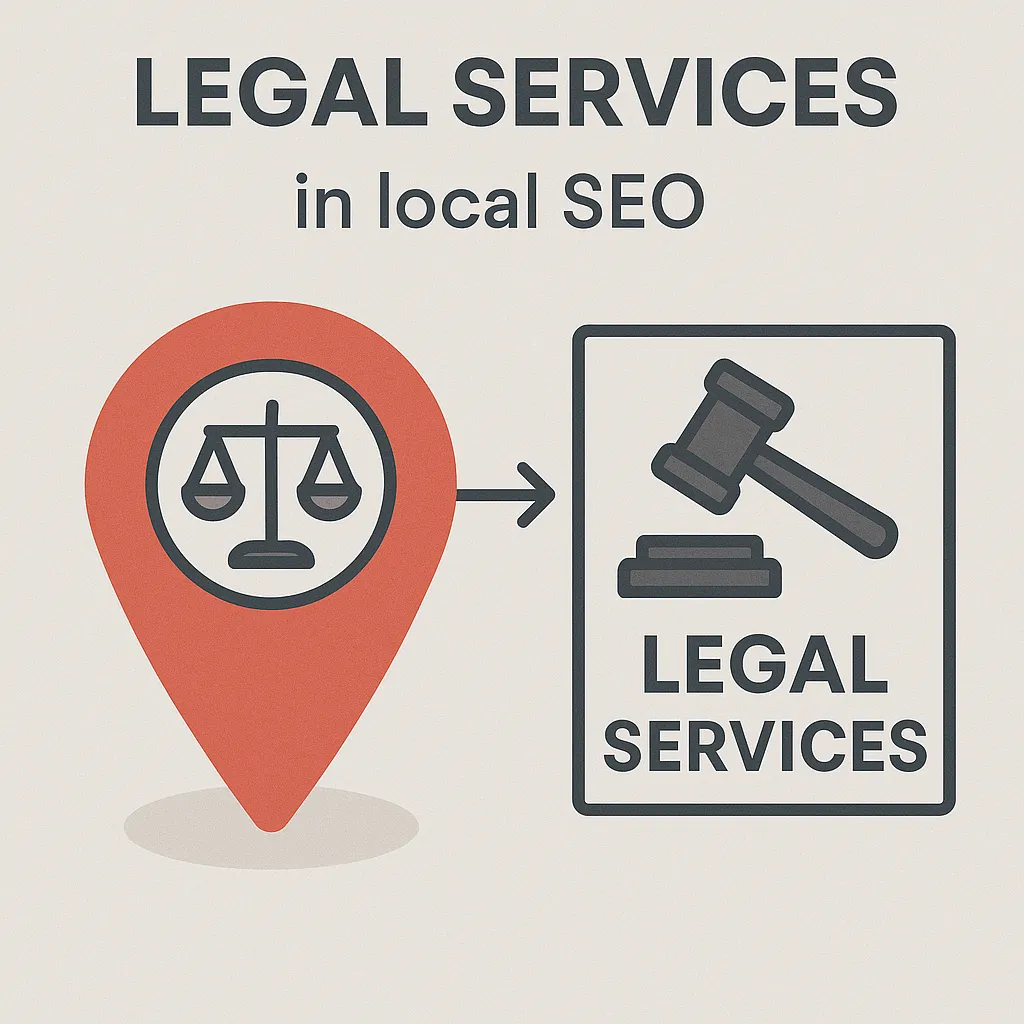
4. Home & Field Services (plumbers, HVAC, electricians)
- Service-area precision
Set radius/service-area ZIPs rather than a fake storefront; Google shows these boundaries in Maps after the Vicinity update. - 24/7 & emergency intent
More than 70 % of plumbing searches are mobile “right-now” queries—list after-hours phone lines and embed “Request a call-back” buttons. - Bookings & quotes inside GBP
Tie your scheduling tool into Google’s “Bookings” tab so prospects can lock a slot without leaving Search—Reserve-with-Google now supports home-service verticals. - Citations: Angi, HomeAdvisor, Thumbtack, Yelp. Encourage photo reviews that show the finished job (Google’s Vision API recognises tools & uniforms and credits relevance).
5. Hospitality (hotels, B&Bs, attractions)
- Dedicated hotel profile fields
Amenities, class rating, room inventory links, and price feeds live in a hotel-only GBP interface; keep them synced daily or risk price-mismatch penalties. - Photos matter more here
Google reports hotel images receive up to 4× the engagement of other sectors—audit user-generated shots monthly and flag poor-quality ones. - Things to do & package schema
Mark up nearby attractions withTripand link package pages; Google’s “Things to do nearby” modules pull directly from this. - Citations: Booking.com, Expedia, Trivago—price parity is a ranking factor inside Google Travel.
6. Automotive (dealerships & repair)
- Live inventory feeds
Upload vehicle feeds via the Merchant Center orVehicleschema so your cars appear in Local Inventory Ads and the “Cars for sale” carousel. - 360° & video merchandising
Google lets high-res spins and test-drive videos surface in both Search and Maps; they drive CTR +18% on mobile dealer queries. - Category nuance: use brand + service (“Ford dealer”, “Used car dealer”, “Auto repair”) on separate GBPs where applicable to avoid category dilution.
- Citations: Cars.com, Autotrader, DealerRater; keep stock and hours consistent across all.
How Do Tools Help In Local Seo?
Tools play an important role when doing local seo. Tools that help in local search engine optimization, Listing management tools like Yext, Moz Local, and BrightLocal, and others include:
LocalVox: An integrated platform for local marketing.
- Use for: SEO, social media, and email marketing campaigns.
BuzzStream: A specialized tool for digital PR and influencer outreach.
- Use for: Managing contacts, sending outreach emails, and tracking campaign success.
Ahrefs: A powerful, data-driven suite for search engine optimization.
- Use for: Keyword research, backlink analysis, site audits, and tracking search rankings.
Hootsuite: A complete solution for social media management.
- Use for: Scheduling posts, monitoring engagement, and analyzing performance reports.
Google Business Profile: The essential tool for managing your Google presence.
Use for: Updating your business listing, engaging with customers, and viewing analytics.
Thinking of a career in Local SEO?
A career in local seo is the best option. Here is the data: The demand for Local SEO expertise is increasing, reflecting its critical role in connecting businesses with their surrounding communities.
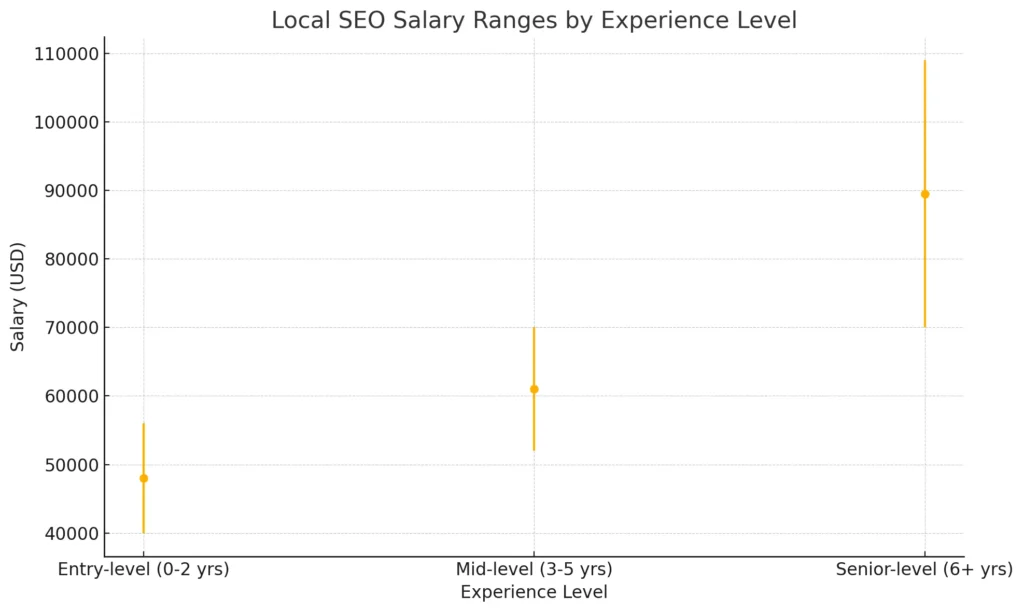
2025. However, salaries can vary significantly based on experience, location, and industry.
- Entry-level (0-2 years): Around 40,000 to 56,000 annually.
- Mid-level (3-5 years): Ranges from 52,000 to 70,000.
- Senior-level (6+ years): Can reach approximately 70,000 to 109,000, with top earners making up to $90,000 annually
How do i Learn Local seo Full?
Upleadseo is the deep knowledge house of seo. I publish detailed articles that mostly cover all topics in seo with research, results-oriented fact fact-based information, and real ranking factors or guides that really help.
Get professional Local SEO help
Upleadseo expert is 24-hour active, you can consult whenever you want. At Upleadseo Agency, we provide leading local SEO services that truly stand out. Our difference? We don’t just aim for top rankings; we deliver them. We use proven, data-backed strategies for on-page optimization that consistently place businesses higher in local search results. This means more targeted traffic, more qualified leads, and a direct path to increased revenue. We transform local visibility into a powerful, measurable growth engine for your business.
